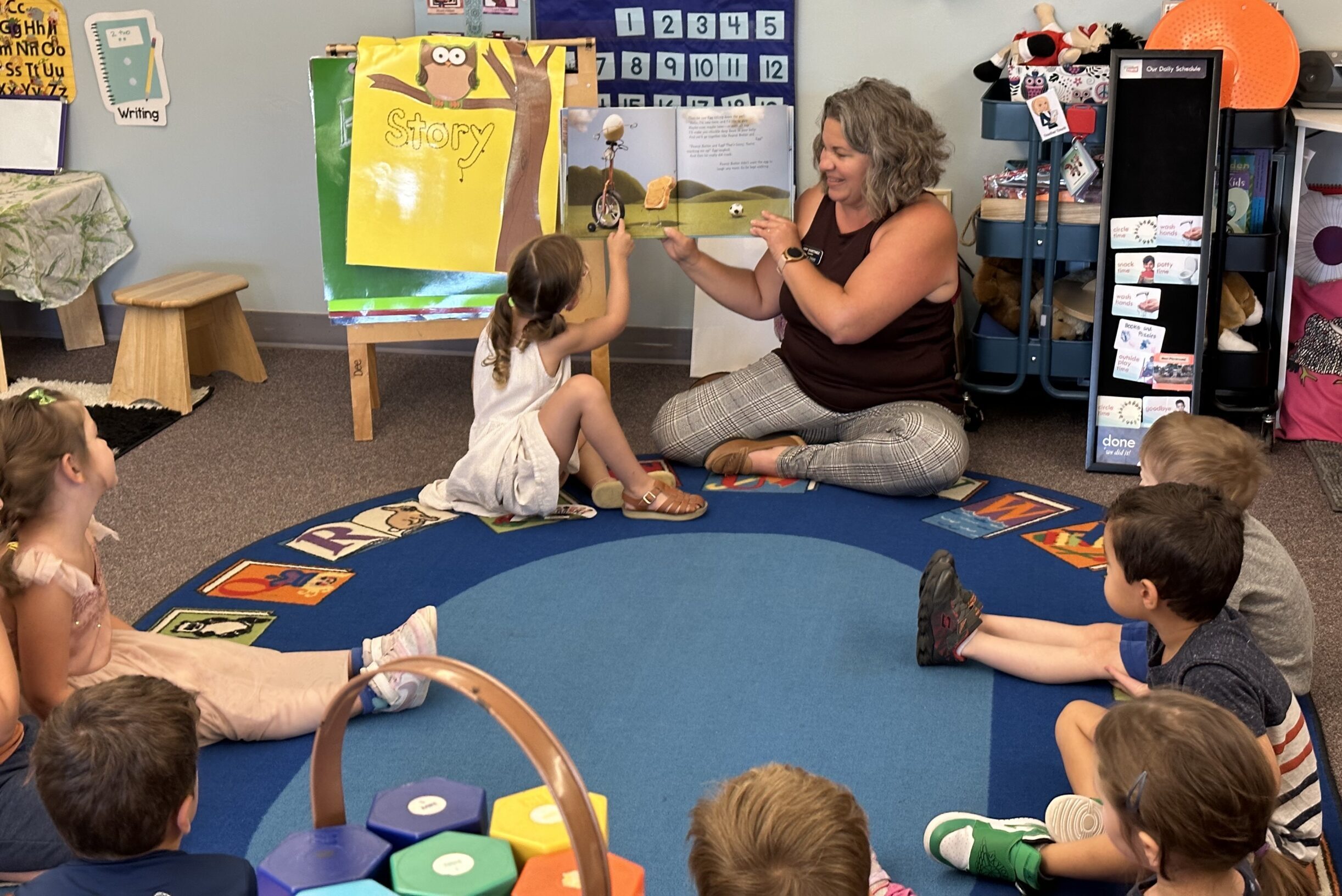

This was a great week for porch sitting. In the afternoon, massive moisture-laden clouds billowed above the 14-thousand foot tall mountain and churned into dark thunderheads. The sky began to vibrate and rattle and belch and finally, fat raindrops pounded the street and sidewalk and filled the gutters and poured from the downspouts.
The porch, L-shaped and as wide as the whole house, stood between the placid summer afternoon quiet inside the house and the sudden frantic weather outside. From my tall wooden rocking chair, I was an invisible witness, the dog hovering at my feet, his eyebrows raised at the thunder.
This porch has served us well — and the family before ours, and many others all the way back to 1900 when it was built. It is my favorite place to read and to just sit, but never in the morning, only in late afternoon when the sun is low behind the mountain. Cars wind their way home down the quiet street and dog walkers stroll the sidewalks. Occasionally, a draft of wind raises the charred scent of someone’s backyard barbecue. The early evening air softens the sound of voices trickling in from across the neighborhood.
The porch at my grandfather’s house where I spent childhood weekends was a simple covered floor with no railings at its edge, an ominous gap between it and what lay beyond — a thick forest that was dark even by day, tangled trees and an impenetrable floor thick with vines. At the far end of the porch the view opened to a bright, sun-covered field, my grandmother’s kitchen garden planted in neat long rows, beans strung on teepees made of fallen tree limbs. At night, we walked out the front door onto the porch with no porch light and watched fireflies rise from the damp forest floor, their lights flickering deep into the blackened woods.
Our house in town was new and sat on a concrete slab, the extension of which was the front porch. Two steps and a gray expanse of smoothed concrete that led to the front door. A flimsy aluminum lawn chair with a plastic webbed seat for our mother to sit on and brush our hair. A stage for the neighborhood kids to meet on and plan the day, for paper doll cities and Barbie houses. By end of day in summer, a place to lie down, cheek to floor, and drain off hours of accumulated heat.
Porches were neither outside nor inside, thresholds of thresholds. Porches were where, as teenagers, we anticipated goodnight kisses and prayed the front door would stay closed as long as those kisses lingered.
When I grew up and had a house full of babies, the front porch was my portal to the outside world, to the yard full of balls and tricycles and the redbud tree my sons learned to pee on, and the house next door with its tidy kids and their babysitter who became my friend and rocked with me on the porch. In warm weather, I set up a small mesh playpen on the front porch and laid the babies face up where they could thrash their fat arms and legs and squint into the sun. The doors into the living room stood perpetually open and music leaked out from the stereo to the front porch. The saddest time of day was when we finally had to go in.
A lifetime and many porches later, this one built in 1900 held us for days and days the summer my son died and his brothers and sister and father and I and everyone who loved him sat on the heavy wooden swing and in the rockers and on the railings, talking, smoking cigarettes and flipping butts into the flowerbeds, quieting as the sprinklers clicked on and the hot evening cooled down. Neighbors arrived with dishes in hand and it seemed no one ever made it past the porch except for quick forays through the silent living room into the kitchen for plates and forks and knives. We balanced plates on our knees and ate and cried and laughed and stayed and stayed on the porch until we couldn’t stay awake another second.
Three years later, the porch held us again when my children’s father died. The next-door neighbor brought us pies. The night brought us comfort. From inside, when I went to bed, I could hear the muffled voices from the front porch deep into the night. Blessed assurance beneath the black, starry sky. Blessed assurance between inside and out, between then and now.
Kathryn Eastburn is the author of A Sacred Feast: Reflections of Sacred Harp Singing and Dinner on the Ground, and Simon Says: A True Story of Boys, Guns and Murder in the Rocky Mountain West. You can comment and read or listen to this column again at The Big Something at KRCC.org. “The Middle Distance” is published every Friday on The Big Something and airs each Saturday at 1 p.m. right after This American Life.








